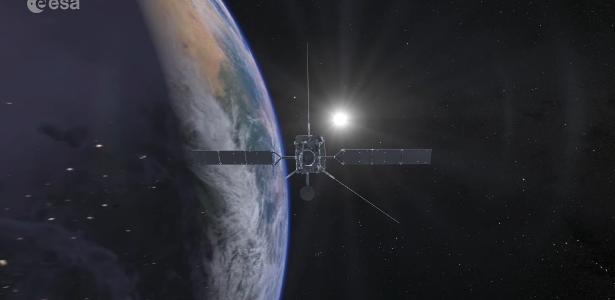orbital solar vehicle A probe produced by a joint project of the European Space Agency (ESA) and NASA (National Aeronautics and Space Administration) To study the Sun, it will return to a passage close to Earth, in a flyby of our planet before it begins its main scientific mission. It was launched in February 2020 and its return will allow it to enter the track for the next pass towards the sun.
However, its scheduled return on Saturday (27) presents a challenge, as the probe must pass through the clouds of space debris that have surrounded our planet since the beginning of its space exploration, “making this maneuver the most dangerous flight for a scientific mission.” About the potential risks from the impacts, the European Space Agency said in a statement.
The probe will be at its closest point to Earth at 1:30 a.m. Saturday, Brasilia time, just 460 km above North Africa and the Canary Islands – just a few kilometers from the orbit of the International Space Station, which is 400 km away.
The maneuver is necessary to lower the spacecraft’s power and align it with its next pass toward the Sun, but it does come with risks. The spacecraft must pass through two orbital regions, each inhabited by space debris. ESA, in note
The first is located 36,000 km away and consists of a ring of geostationary satellites (generally used for communications). The second includes objects in low Earth orbit of about 400 km. “As a result, there is little risk of a collision. The Solar Orbiter operations team is closely monitoring the situation.”
Those responsible for the probe will have a few hours to study the trajectory and make small changes that allow for a less dangerous journey when passing through Earth.
Leaving these potential dangers aside, the flyby will represent an opportunity for the probe to study Earth’s magnetic field, the kind of protective bubble that is also the atmospheric front of the solar wind, constantly coming in through particles emitted by our star. .
“This flyby is exciting: We’ll take a look at what the Solar Orbiter is seeing in our part of space and how that compares to what we’re seeing. And if there are surprises, what are they?” asks Anja Strømme, director of the ESA Swarm mission, which in 2013 launched three satellites to study Earth’s magnetic field.
After approaching Earth with a flyover to change its course, the probe will be on its path toward the Sun and the “never seen before” polar regions. And although it has not yet reached its maximum exploration capacity, the Solar Orbiter has made it possible to produce more than 50 scientific articles since its launch.



![[VÍDEO] Elton John’s final show in the UK has the crowd moving](https://www.lodivalleynews.com/wp-content/uploads/2023/06/Elton-John-1-690x600.jpg)



More Stories
What ChatGPT knows about you is scary
The return of NFT? Champions Tactics is released by Ubisoft
What does Meta want from the “blue circle AI” in WhatsApp chats?